
It has been a full season since I last wrote here. I dimly remember a dark winter, (are my socks still damp?) with sunlight rationed as though WW2 never ended. Right now, mid April and 70 degrees, we have an armistice: the bamboo is incandescent in sunlight above the pond and the towhee is singing his one song which is “towhee, towhee.” Annoying, but reassuring, as the song means “here I am, being myself, as usual, and by the way thankyou for not over-pruning the laurel hotel because we really like that leafy wallpaper. Is it British?”
What a relief! We got here! Eggs are being made and laid, the vaccine is working, and someone came for a toasted bagel in my kitchen today: we ate it unmasked, with butter! (I don’t know if it is possible to put too many exclamation points after the buttered toast….)
The little very small things make me very happy. 12 months of pandemic have wrought changes. I have found myself gravitating to the size of the page, an intimate space where art is not performance, but conversation: The missing intimacy of whispers and histories traded and notated in the margins; old books, primers, notions catalogs from St. Louis, 1923, the Seattle Telephone book 1947.
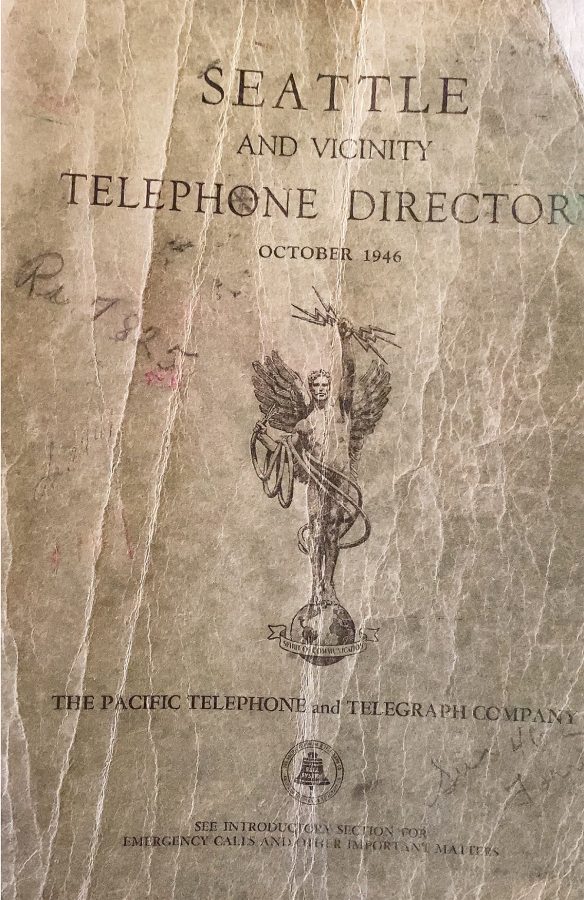
In this year the present has seemed indefinitely suspended, and I’ve been going back in time. One restless afternoon I stumbled onto one of Seattle’s last antique stores, soon to be leveled for condos, and began documenting it with my camera. Somehow, in the act of filming a book’s pages as I turned them, words lifted from the page and became sound. On my last visit there I came
home with “back issues” of newspapers from 1924 and 1915. Now in the morning I sit at the kitchen table and pour over the recital reviews and petulant letters from second chair violinists in Musical America. I find myself absurdly thrilled that Wadsworth Provandie’s debut in a production of The New Life got a “rousing ovation and he sang twice.” I learn the proper techniques of canoeing in a skirt, on The Girls’ Page in The Youth’s Companion. Reading these frayed bits of history gives me perspective. We may complain about social media censorship, but it took Machiavellian footwork to get the parts for Mahler’s 8th past the cablegram censors before WWI. Imagine an orchestra performance being held up for a year because “the parts were in Europe.”

Perhaps all this reading of history justifies the slow pace of my work. Perhaps nothing justifies it and it simply is what it is. I am using the quiet time waiting for the world to open up to sort history, to think and to figure out how to reinvent my processes. I have worked primarily as a printmaker and photographer for a decade, and (this time) it is really time to move into painting after many years away. To nudge me forward I have again signed onto The100DayProject. I’m calling this one #100DaysWithoutCommandZ, which you can follow on my Instagram.
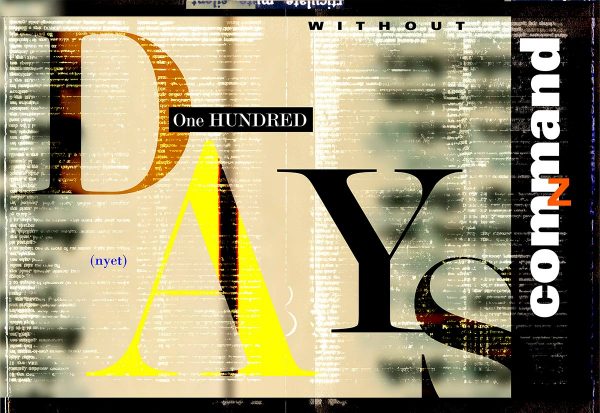
On the keyboard one small tap of command z undoes any error. How does that translate in work made by hand? After a lifetime in design and the unforgiving arts of typography how can I learn to embrace the imperfectable? My studies have taken me on a circuitous journey that began with an art history movie and a box of rice paper.
 In early February a friend sent me a link to a film called Edo Avant Garde. I sat for several nights watching the movie again and again, transfixed, as this extraordinary era of Japanese art history unfurled in my lap. In my formative years as a calligrapher I spent nearly a decade immersed in Buddhist arts, T’ai Chi, meditation and studying traditional Chinese and Japanese painting. The internet had not yet been invented, and I had a purity of focus unimaginable now. In those days I rose at 5 AM every morning, meditated, did yoga and practiced kanji, grinding my ink by hand. As I watched the long expanses of silk and paper blend into each other on my screen I could almost smell the perfume of the ink. I could feel the paper, and the weight of the iron fish placed at the top of my table to keep the paper from moving under the brush. The next morning rummaging in the attic I found a box of rice paper I had ordered from Japan in 1989—and never opened.
In early February a friend sent me a link to a film called Edo Avant Garde. I sat for several nights watching the movie again and again, transfixed, as this extraordinary era of Japanese art history unfurled in my lap. In my formative years as a calligrapher I spent nearly a decade immersed in Buddhist arts, T’ai Chi, meditation and studying traditional Chinese and Japanese painting. The internet had not yet been invented, and I had a purity of focus unimaginable now. In those days I rose at 5 AM every morning, meditated, did yoga and practiced kanji, grinding my ink by hand. As I watched the long expanses of silk and paper blend into each other on my screen I could almost smell the perfume of the ink. I could feel the paper, and the weight of the iron fish placed at the top of my table to keep the paper from moving under the brush. The next morning rummaging in the attic I found a box of rice paper I had ordered from Japan in 1989—and never opened.
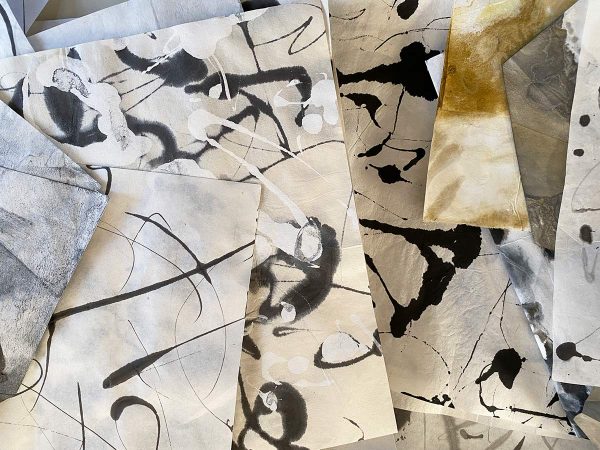
You cannot learn to make mistakes if you think your materials are precious. I had enough paper in this box to give me permission to destroy it all. Paper became my door back into the life of the body. I have always been fascinated by origami, and I began to think of the process of painting and crumpling the paper as Origami Before it is Born, which led to my own little tribute to the art process, inspired by the Edo film. This led to collage, and the introduction of the ironing board to my studio (ohhhh how paper warps when wet!). The introduction of the ironing board led to thinking about women, and women’s work, and vintage notions catalogs and patterns. You do not want to know how many hours I have spent on Ebay bidding on old arithmetic books and primers. Along the way friends passed along new and old papers and ideas for how to bridge the digital and analog worlds. I learned how to add gold leaf to photographs. I studied up on the fifty ways to glue one thing to another. And finally I pulled out a packet of Braille cards scavenged in Portland before the pandemic with my artist friend and muse MaryAnn Pulse. This led me to a visit to the Braille library for a stack of more, in the form of dozens of embossed magazines, that would give me permission to destroy them and in the process learn a great deal about touch, and how technology and the human can interact in new ways.
Each of these directions is a little novella in itself. I have condensed the story here into a stream of pictures of my process with notes. Where an experiment has resulted in a finished work that is available in my shop I have indicated that with a link in the caption. If you see something you are interested in let me know, and it may be listed soon or available directly without going through my shop. The work is so interesting to me and so new that often I hold onto pieces until I know what they are telling me. The pieces are posted more or less chronologically to trace the evolution of ideas.
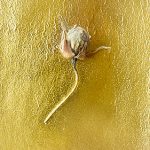 Before getting to painting, I had some unfinished business with gold leaf.
Before getting to painting, I had some unfinished business with gold leaf.

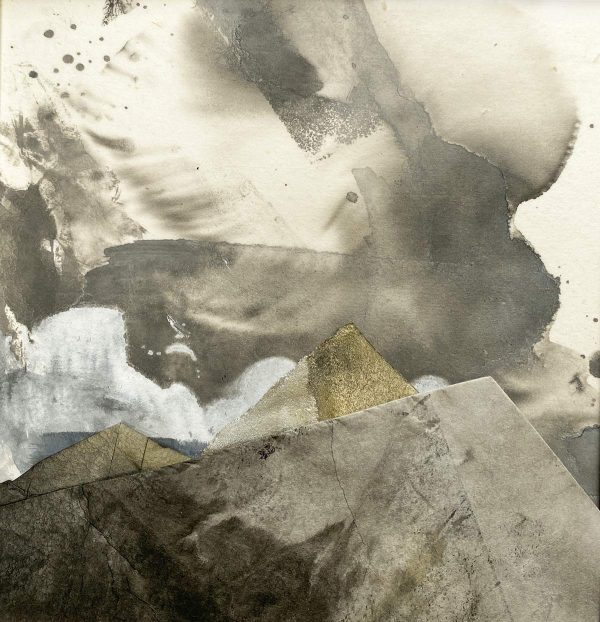
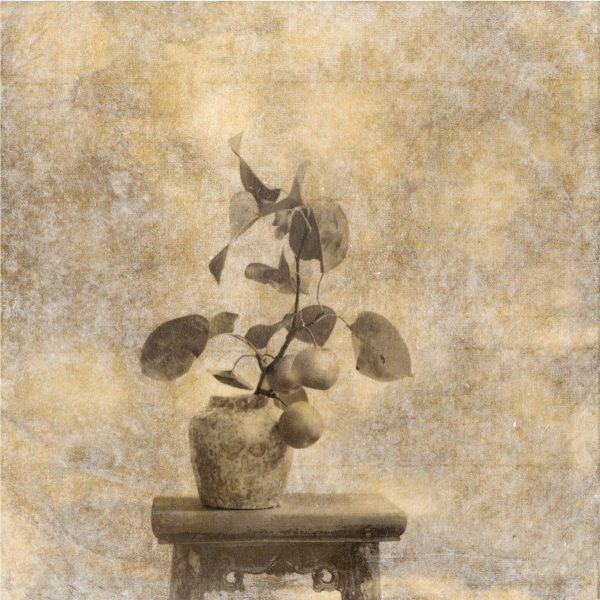

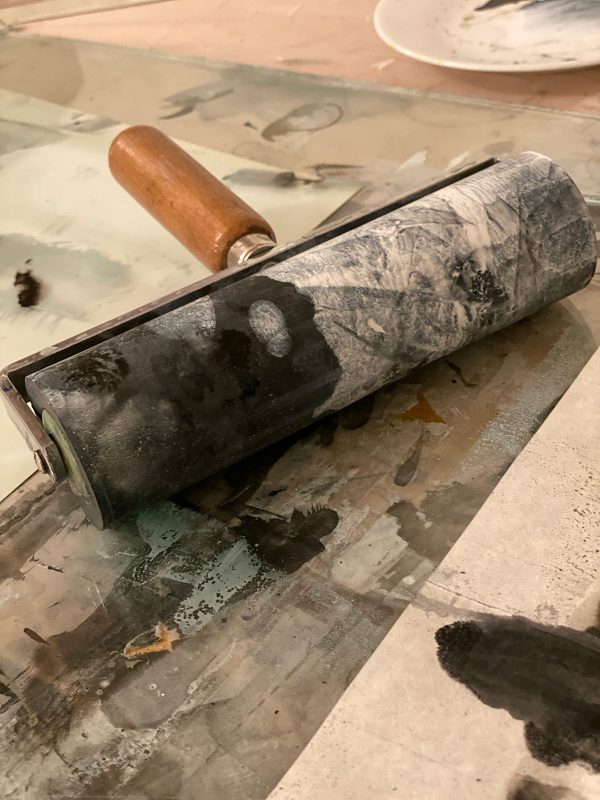
A video homage to process, inspired by the Edo Avant Garde. The studio begins to come alive.
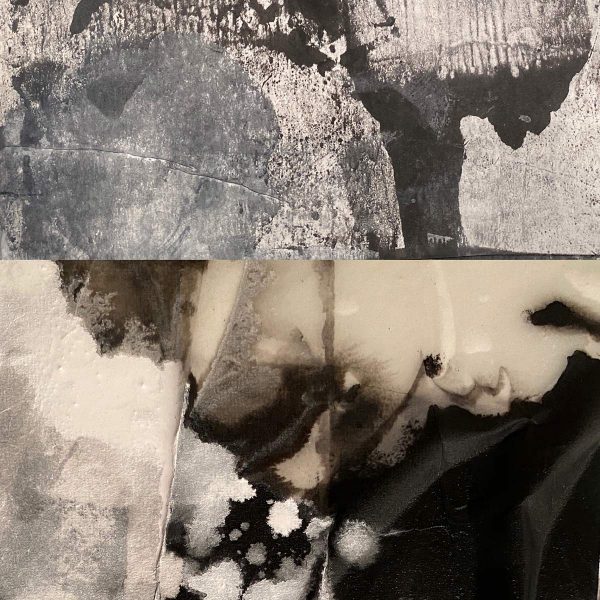
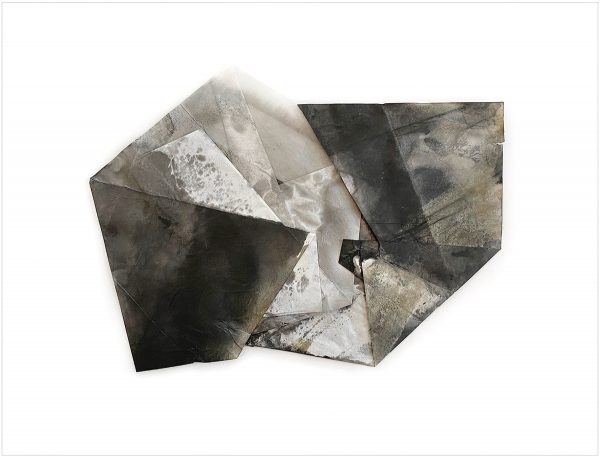

I spend entire days shifting papers back and forth, studying composition and how folds and interruptions move the eye, each fold like a drawn line. The decisions bewilder me. How do you know when something is in perfect balance? On the way from the post office a crow flies in front of me and I catch him in my phone.
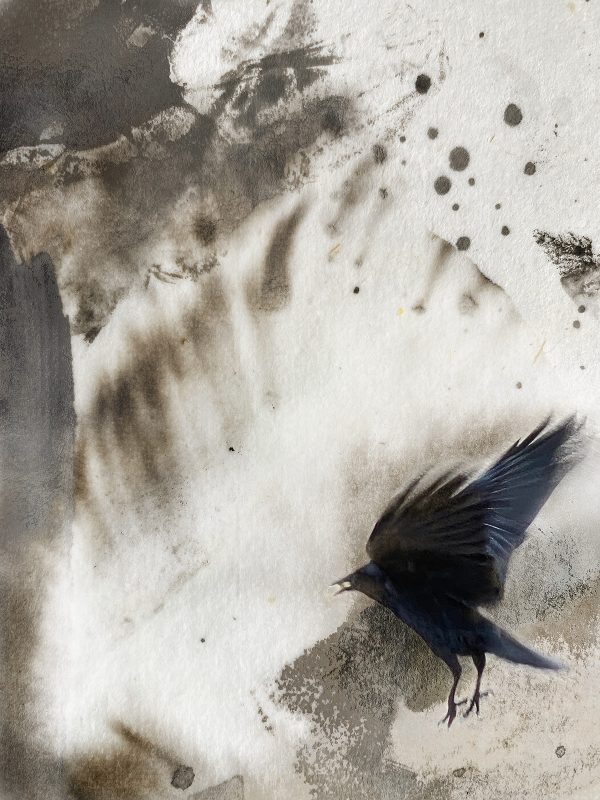
Plum blossoms turn my shoes pale pink. I paint what they smell like in white ink on old tarnished paper. The spring feels like this.
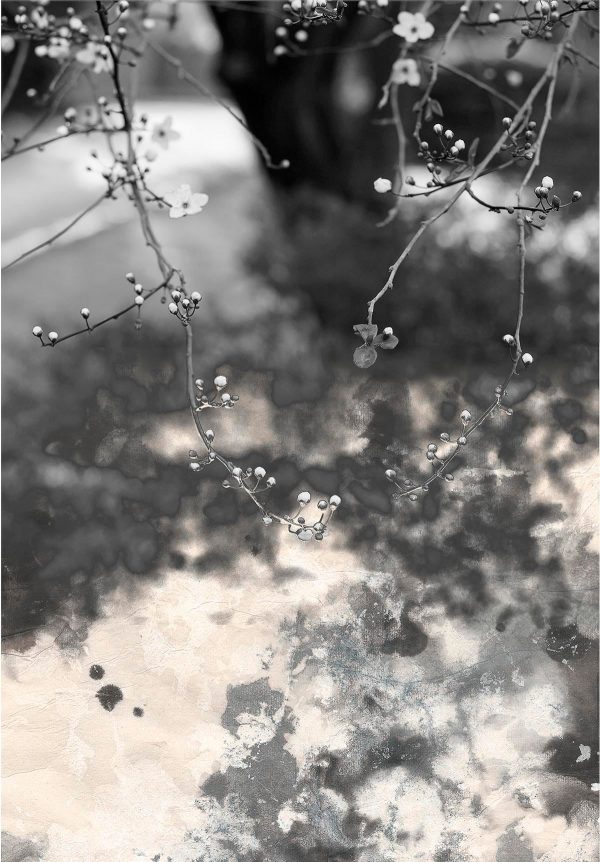
I go back to writing characters.
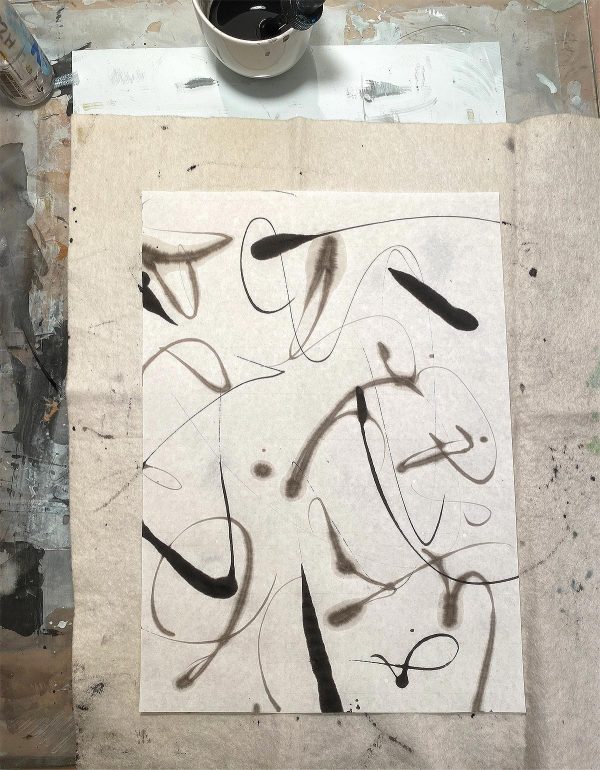
Which then evolve into a long scroll, or, turned vertically, a totem of non-verbal emotion.
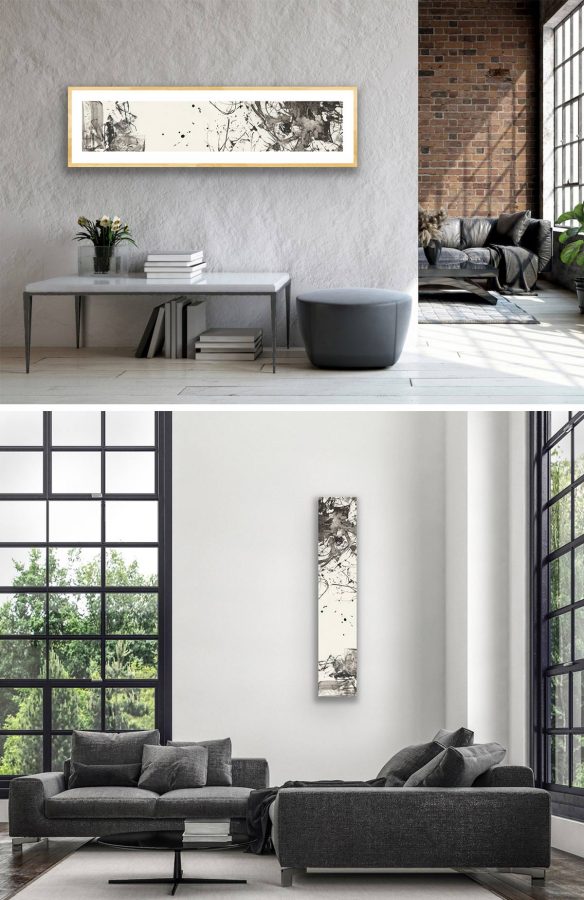
Which gets me thinking about telephone poles, and how much I love billboards that have been interrupted by weather. I take a walk on Capitol Hill, where I discover that during the pandemic a year’s worth of human communication has gathered on each corner.
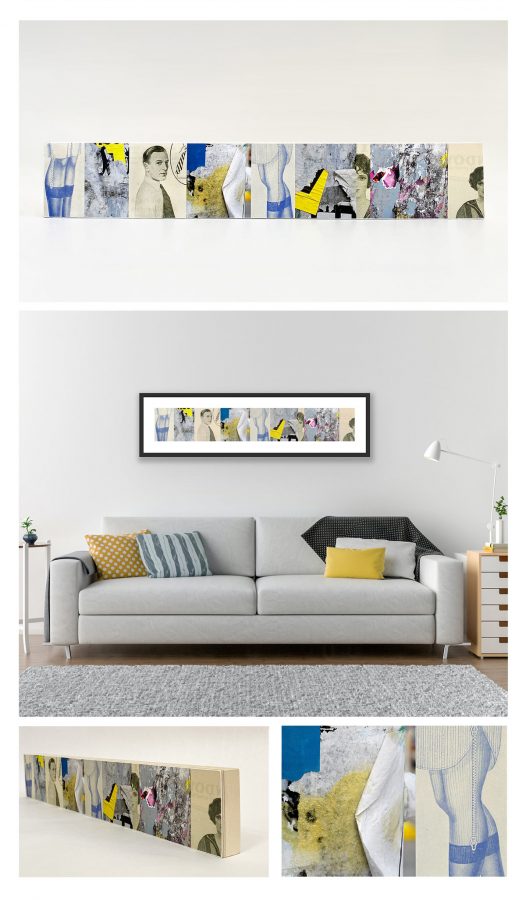
The wabi sabi of urban telephone poles, mixed with ephemera from another century. Courtship is eternal. But the truth is that modern advertising only becomes beautiful when it’s had a staple through its heart and a year in the rain. 1923 was beautiful out the gate. Bring back men in ties, please
All that looking at torn paper and texture makes remember the stack of Braille buried under piles of other stuff in the corner.
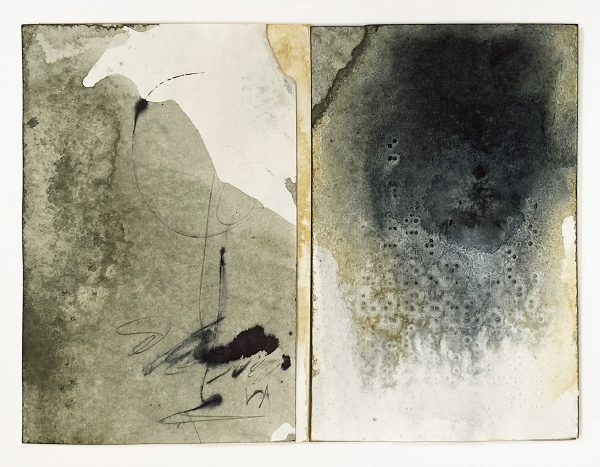
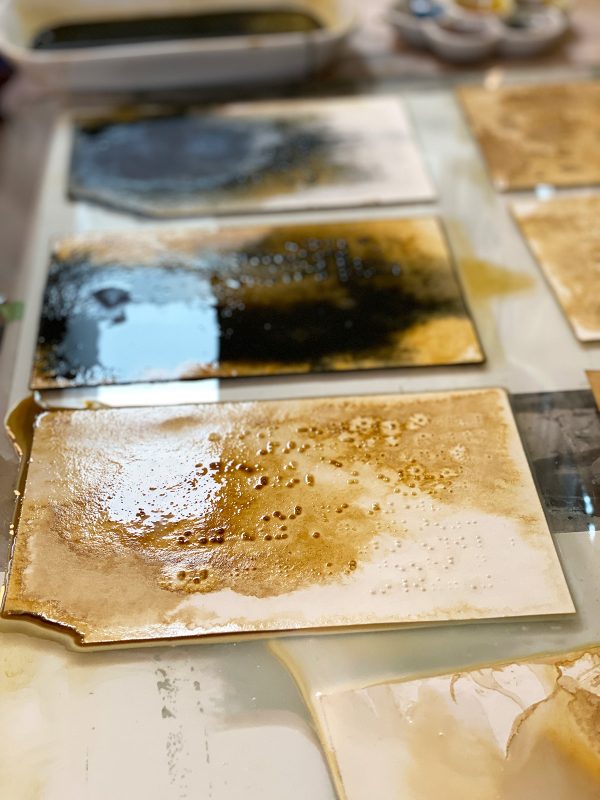
I go to the Braille Library and get a foot high stack of invisible PC and National Geographic. What is it like to read the world through touch? I gather old phone books, the stock market 1988, the MacCalls Pattern lady looking for her skirt. This will require getting to know glue.
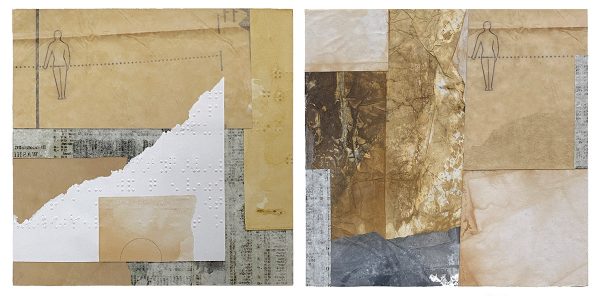
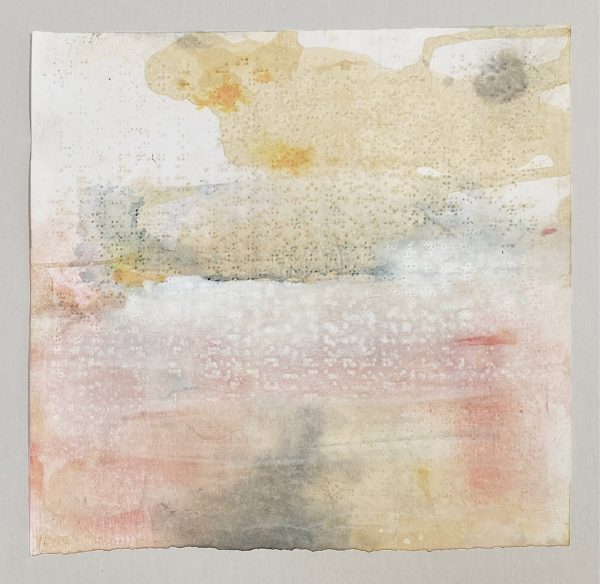
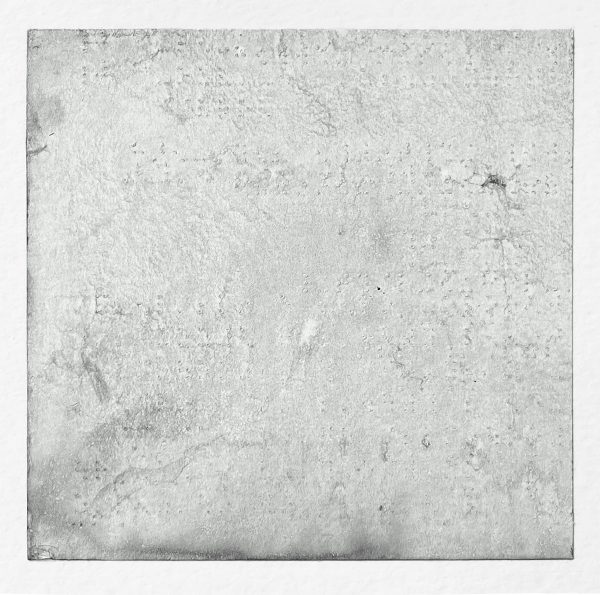
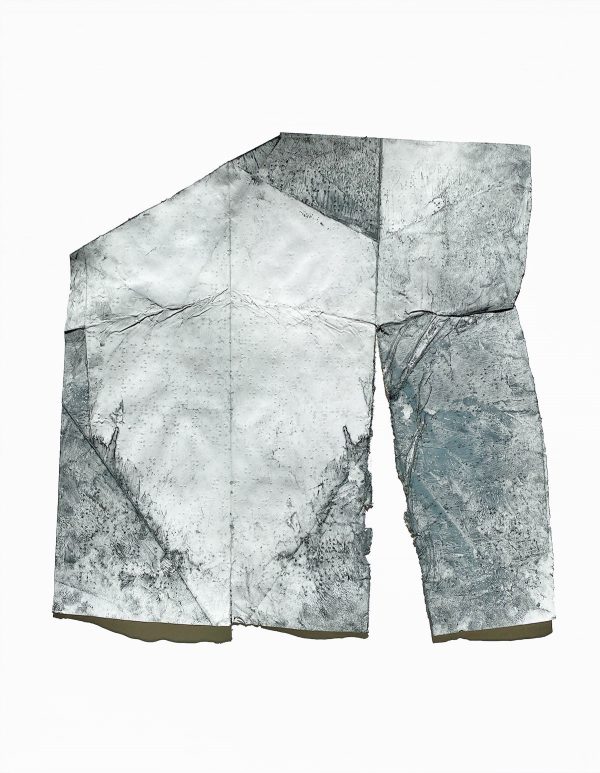
In the cloisters of the studio I remember downtown when it teemed with crowds, and how even when people weren’t swathed in gauze you rarely saw their faces directed at you, aware of you. We “reach out and touch someone” by tapping on a tiny piece of glass. The light glancing from skyscrapers shimmers with veils of code allowing everybody to be somewhere else.
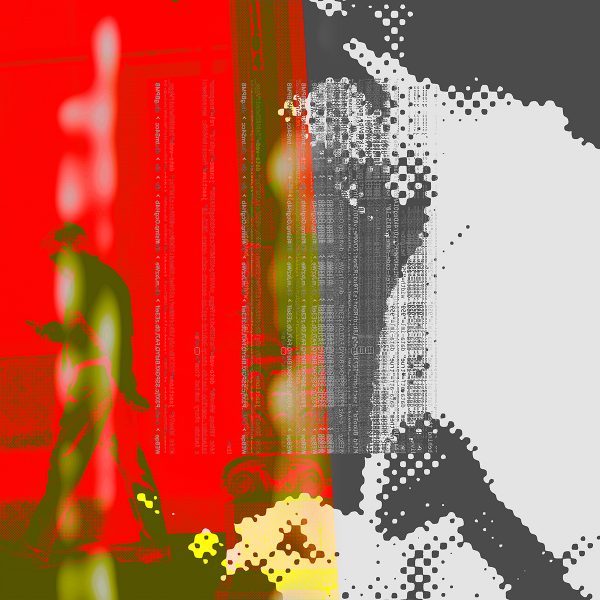
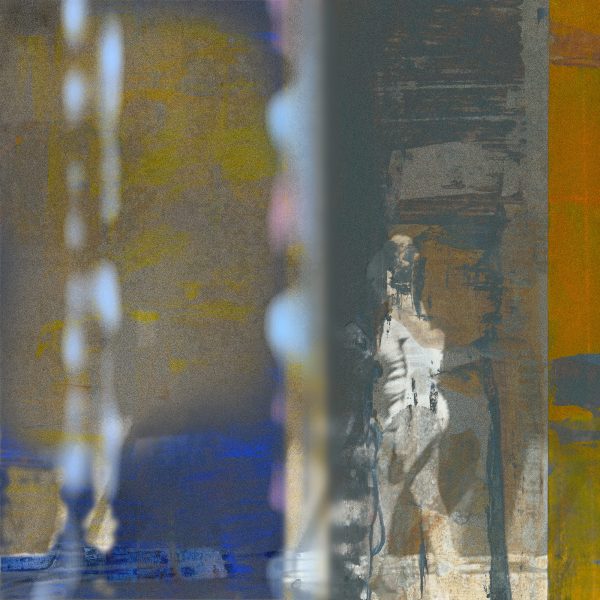
It’s all language, evolving and devolving into the final minimalist string of code: “I am here, are you?”
“Blue Sky Skyscraper,” is the most recent piece influenced by the idea of touch. It has a companion, “Gray Sky…” This duo is dedicated to everyone who loves Seattle, and counts all the shades of gray, while waiting for the blue. The piece is built from a high resolution scan of my ink paintings on Braille paper, layered with photography. I begin these pieces as meditations, having no idea where they will go This is exactly what it felt like on that blowy day in March outside the Braille center, looking up. Near and far is the same place.
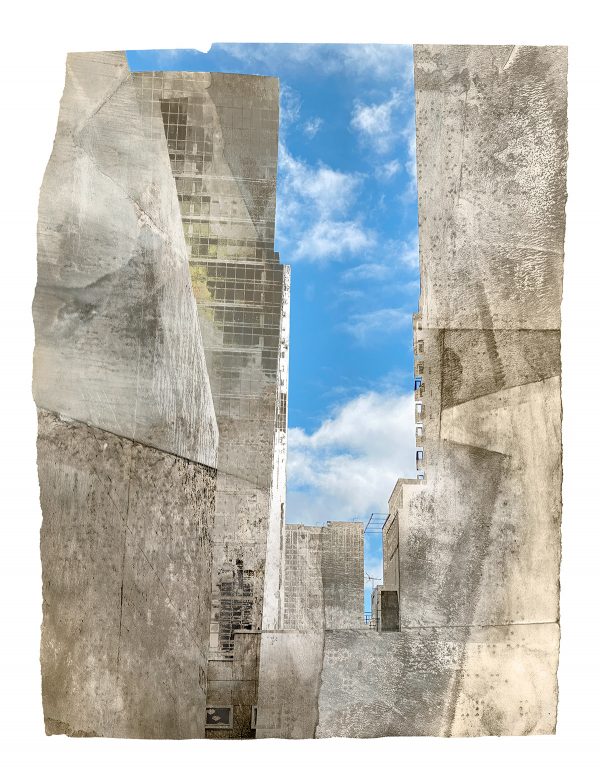
The goal of #100DaysWithoutCommandZ was not to completely stop working with the computer, but to understand the ways that technology has affected me, and to push “renew.” To begin to find freedom to make mistakes and make the kind of art that builds on them, with the rich and layered pentimento of error. My digital collage art carries on, and I am currently at work on a commission for an apartment house based on the theme of wabisabi. It’s all about “Yes/And,” as the improv people say. Over the next months I will be continuing to experiment. I will be studying with a brilliant printmaker at Catalyst Art Lab and learning new ways to blend painting and printmaking, using non toxic inks, without a press. This is a year of renewal and experimentation. I can’t wait for the next step!
Jerry Arnold says
Absolutely brilliant.
Happy Spring.
Jerry
Kongens Lyngby
Denmark
Bill Hook says
Love your journey. Hard to imagine National Geographics in Braille without entering some esoteric mind set. It will be interesting to watch it unfold. Bon Voyage
Allison B. Cooke says
Wow Iskra!! You out did yourself. What an amazing read and visual delights!!! Kudos